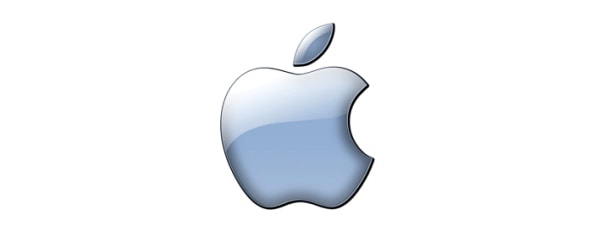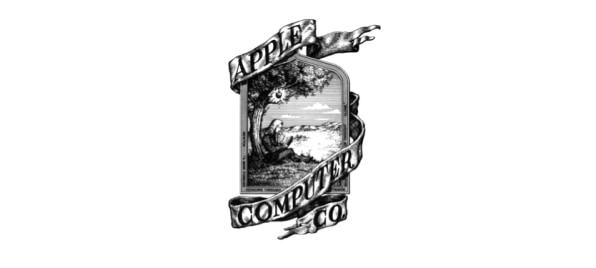how to make your own designer brand
It's no secret that Apple has been universally lauded in recent years for the amazing design employed so consistently by the brand, both in its products and its marketing. And rightfully so. Apple's incredible aesthetic sense is best symbolized by its current beautiful, clean and simple logo.

It makes you wonder if there ever a time this company didn't put a premium on putting out the best design work possible. Well, actually, yes, there was, when Steve Jobs and Steve Wozniak began the company back in 1976 with this eyesore of a logo:

It's easy to pull this early design apart on many levels–but, of course, it's probably the best two twenty year-olds with very thin bank accounts could put together. They had to allocate what resources they had toward their actual product.
As Apple grew and progressed, however, design was allowed to assume a central role and, of course, became one of the company's most valuable assets. Most Apple enthusiasts, when asked to explain their devotion to the brand, will quickly mention the "look" of the products and the brand. That's because the company views its design elements as a "present" to its customers.
Do you see your brand's design as that kind of gift? Or just a necessity of your business? If it's the latter, not the former, you may be selling yourself (and your brand) short.
The right design can be critical to a brand's success. The right design connects with the consumer and engages them on a deeper level that makes them view the brand in question more favorably. We all know buying decisions are generally rooted more in unconscious emotion than in facts. Therefore, the look of a brand will play an important factor in whether the desired customers are attracted to your products or services, or repelled.
To quote Robert Brunner, designer and author ofDo You Matter: How Great Design Will Make People Love Your Company, "a brand is not your logo or ID system. It's a gut feeling people have about you. When two or more people have the same feeling, you have a brand….everything you do creates the brand experience, ergo design IS your brand."
Lisa Massheimer, associate design director for brand identity in the Hamburg office of Landor Associates, has some strong and insightful opinions into where she believes brand design is going in 2013. "It will really be about implementing big ideas," she says, "so design has a clear purpose and plays a role in reshaping our society, redefining our society—more than just about its look."
Here are three trends she sees developing in brand design in the coming year:
1. Back to the basics (emphasis: typeface).
Massheimer believes that brand design will become more and more simple and clear with a strong emphasis on typeface, which she sees as becoming one of the basic elements in design.
2. A sense of nostalgia.
Tapping into images and looks that the consumer recognizes provides a warm connection for the consumer, as well as a sense of security, says Massheimer. When you're able to modernize those kinds of recognizable images, it makes for a strong aesthetic. KFC made a strong move along those lines when it did a redesign of its logo a few years ago and created a new and hipper "look" for Colonel Sanders.
3. A handcrafted aesthetic.
Finally, Massheimer acknowledges that today's technology can enable design to be pushed to a point that's beyond perfection, but might be also losing something in that process. That's why she believes that when design features an old-fashioned and handcrafted aspect, it can create a stronger bond with the public.
Whichever way the design winds blow this year, I believe that it's always important to have a design expert involved at the beginning of any major branding project. In the words of Joe Doucet, founder of the Joe Doucet Studio, "It's all about integrating design and brand. We need to cease thinking of them as different disciplines. The essence of the Apple brand comes through its design. Take the logo off a BMW and you still know it's a BMW."
So, is your brand design more Apple 1976…or Apple 2013? Does your design have a lot of excess visual noise that clutters communication and interferes with the consumers' connection with your brand? Or does it "cut to the chase" and speak boldly and directly to those consumers in a way that makes them want to be a part of your brand experience?
As you ponder those questions, you might want to take a look at some of the biggest logo redesigns of 2012 and score for yourself how well you think these major companies did at improving their connection to their customers.
[Image: Flickr user Stefan Powell]
how to make your own designer brand
Source: https://www.fastcompany.com/3005141/whats-next-brand-design